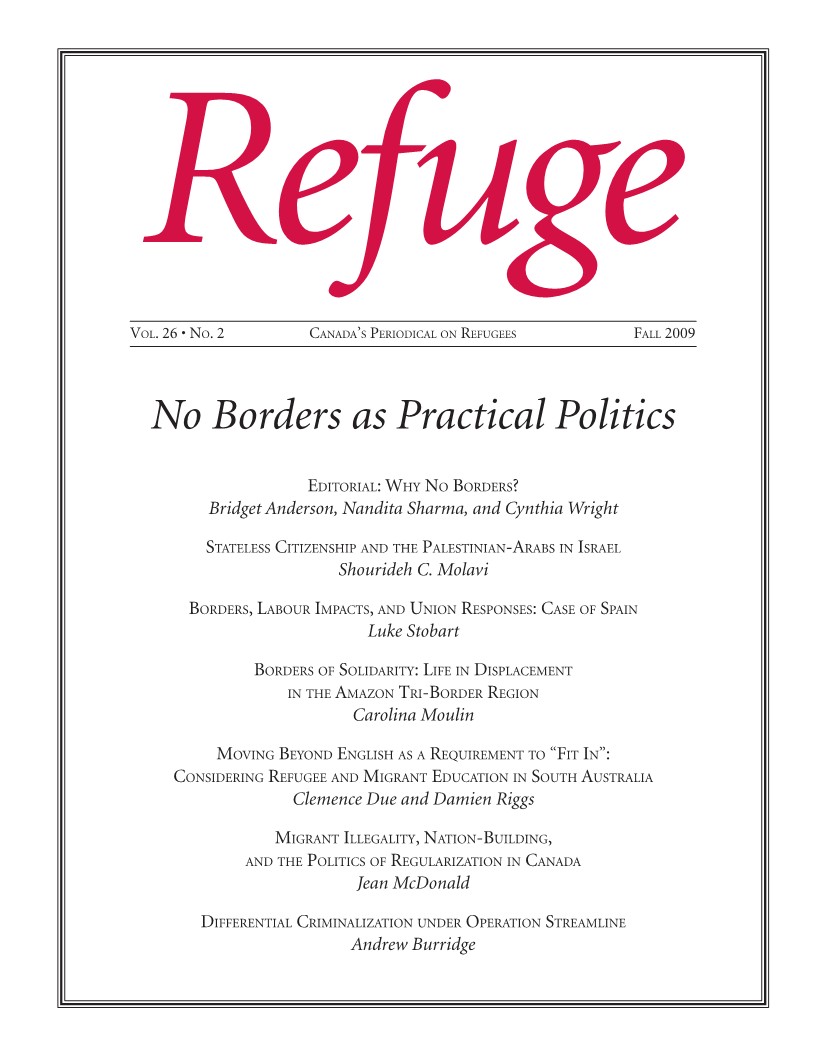Refugees Who Arrive by Boat and Canada’s Commitment to the Refugee Convention: A Discursive Analysis
DOI:
https://doi.org/10.25071/1920-7336.32088Keywords:
Canada, discursive analysis, irregular migration, asylum seekers, refugee policy, discourseAbstract
This paper offers a comparative analysis of official discourse surrounding three incidents of asylum seekers arriving in Canada by boat: the Komagata Maru in 1914; the Sri Lankans who arrived in Newfoundland on lifeboats in 1986; and the Ocean Lady in 2009. The objective is to assess Canada’s commitment to protecting refugees at these three points in history and evaluate academic contentions that the concept of the refugee is being eroded. The selected incidents trace the emergence and decline of the notion of the refugee in Canadian official discourse. Even during the peak of Canada’s commitment to refugees in the 1980s, the discourse reveals blurriness between the ideas of the “refugee” and the “illegal migrant.” However, the characterization of asylum seekers as “illegals” is more intense now than in the earlier periods. This shift in the discourse warrants attention as we face the prospect of what Audrey Macklin describes as the “discursive disappearance of the refugee.”
Metrics
Downloads
Published
How to Cite
Issue
Section
License
Copyright (c) 2011 Alexandra Mann

This work is licensed under a Creative Commons Attribution-NonCommercial 4.0 International License.
Refuge authors retain the copyright over their work, and license it to the general public under the Creative Commons Attribution-Non Commercial License International (CC BY-NC 4.0). This license allows for non-commercial use, reproduction and adaption of the material in any medium or format, with proper attribution. For general information on Creative Commons licences, visit the Creative Commons site. For the CC BY-NC 4.0 license, review the human readable summary.







